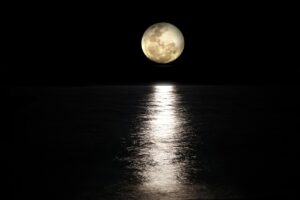Starliner Crewed Test Flight Scrubbed Due to Rocket Valve Issue

The highly anticipated first crewed test flight of Boeing’s CST-100 Starliner spacecraft was scrubbed on May 6 due to a valve problem with the United Launch Alliance (ULA) Atlas V rocket. The launch director called for the scrub a little over two hours before the scheduled 10:34 p.m. Eastern liftoff from Cape Canaveral Space Force Station in Florida.
Launch Scrubbed Due to Valve Problem

The issue was related to an oxygen relief valve on the rocket’s Centaur upper stage. ULA CEO Tory Bruno stated that the valve was buzzing at a frequency of about 40 hertz, which was audible to teams at the launch pad. Forcing the valve to close stopped the buzzing, but flight rules prohibited changes to the state of the Centaur while the crew was on board, necessitating the scrub.
NASA astronauts Butch Wilmore and Suni Williams had already boarded the Starliner when the scrub was announced. They reported no issues with the spacecraft leading up to the launch abort. Officials said preparations were running well ahead of schedule when the decision to scrub was made.
The scrub was a disappointing setback for Boeing and NASA, as the Starliner program has already faced numerous delays and budget overruns. The spacecraft’s first uncrewed flight in 2019 was marred by software issues, forcing mission controllers to cut the test short before the vehicle could attempt to rendezvous and dock with the ISS. A second attempt was then delayed several times by fuel valve issues, and it wasn’t until 2022 that Boeing was able to carry out a successful uncrewed flight to and from the space station.
Next Launch Attempt Depends on Valve Analysis
The next launch attempt will depend on whether the valve needs to be replaced. If the valve is approaching its rated life of 200,000 cycles, it would need to be replaced, pushing the launch to next week. However, if the valve’s buzzing was less than full motion, a launch attempt could occur as soon as May 7. NASA later announced that the agency was projecting a launch no earlier than May 10 to give teams more time to analyze data about the valve.
If the valve needs to be replaced, ULA would need to roll the Atlas V rocket back to its assembly facility. The process would involve applying tooling to support the Centaur upper stage and the Starliner capsule on top, removing pressure, replacing the valve, re-pressurizing the system, removing the tooling, and then rolling the rocket back to the launch pad. According to Bruno, this procedure would take several days, making a launch attempt before Sunday unlikely if valve replacement is necessary.
The launch delay also means that Wilmore and Williams will have to wait longer for their chance to fly to the ISS. After the scrub was announced, both astronauts disembarked from the Starliner and returned to the crew quarters at NASA’s Kennedy Space Center, which is adjacent to Cape Canaveral Space Force Station.

Starliner's Final Test Before Certification

The Crew Flight Test (CFT) mission is the final test of the Starliner spacecraft before NASA certifies it for International Space Station crew rotation missions. It follows two uncrewed flights in December 2019 and May 2022. The spacecraft is scheduled to dock with the station about a day after launch, remain there for approximately a week, then undock and land at White Sands, New Mexico.
The successful completion of the CFT mission is crucial for Boeing, as it would allow the company to begin regular crewed flights to the ISS. This would provide NASA with a second spacecraft capable of transporting astronauts to and from the space station, alongside SpaceX’s Crew Dragon capsule. Having two independent spacecraft for crew transportation is essential for ensuring continuous access to the ISS, even if one vehicle is grounded for any reason.
Boeing’s Starliner program is part of NASA’s Commercial Crew Program, which began over a decade ago following the retirement of the space shuttle fleet. The initiative aims to support private companies in developing new space vehicles to transport astronauts to low-Earth orbit. While SpaceX has been successfully flying crewed missions for NASA since 2020, Boeing has faced numerous challenges and delays in getting its Starliner spacecraft ready for human spaceflight.
Flexibility in ISS Operations Schedules

Despite the launch delay, NASA officials emphasized that there is flexibility in ISS operations schedules. The agency had intentionally cleared its summer schedule to provide ample time for the CFT mission.
The International Space Station is currently home to a crew of seven, including three Russian cosmonauts and four NASA astronauts. The station’s crew members are capable of conducting a wide range of scientific experiments and maintenance tasks, even without the arrival of new crew members.
However, the successful completion of the CFT mission and the subsequent certification of the Starliner spacecraft for regular crew rotation flights would provide a significant boost to ISS operations. With both SpaceX’s Crew Dragon and Boeing’s Starliner available for crew transportation, NASA plans to launch one mission from each company per year, ensuring a consistent presence of American astronauts on the orbiting laboratory.



